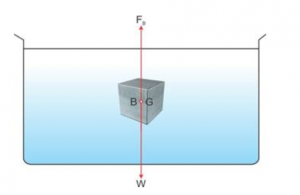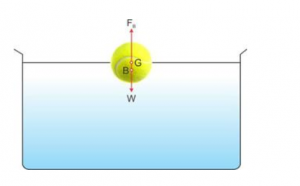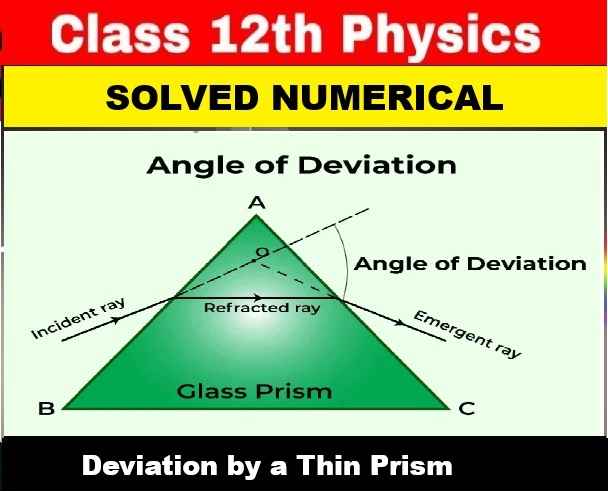Upthrust in Fluids, Archimedes’ Principle and Floatation Exe-5C Floatation Long Answer Type for Class-9 ICSE Concise Physics. There is the solutions of Long Answer type Questions of your latest textbook which is applicable in 2025-26 academic session. Visit official Website CISCE for detail information about ICSE Board Class-9.
Upthrust in Fluids, Archimedes’ Principle and Floatation Exe-5C Long Answer
(ICSE Class – 9 Physics Concise Selina Publishers)
| Board | ICSE |
| Class | 9 |
| Subject | Physics |
| Writer / Publication | Concise selina Publishers |
| Chapter-5 | Upthrust in Fluids, Archimedes’ Principle and Floatation |
| Exe – 5C | Floatation |
| Topics | Solution of Exe-5(C) Long Answer Type |
| Academic Session | 2025-2026 |
Exe-5C Floatation Long Answer Type
Ch-5 Upthrust in Fluids, Archimedes’ Principle and Floatation Physics Class-9 ICSE Concise
Page 137
Que-1: A body is held immersed in a liquid. (i) Name the two forces acting on the body and draw a diagram to show these forces. (ii) State how the magnitudes of two forces mentioned in part (i) determine whether the body will float or sink in liquid when it is released. (iii) What is the net force on the body if it (a) sinks and (b) floats?
Ans: (i) Two forces acting on the body are as listed below:
(a) Weight of the body (downwards)
(b) Upthrust of the liquid (upwards)

(ii) If the weight of the body is greater than the upthrust acting on it, the body will sink If the weight of the body is equal to or less than the upthrust acting on it, the body will float.
(iii) (a) The net force acting on the body when it sinks is body’s own weight.
(b) The net force acting on the body when it floats is the upthrust due to the liquid.
Upthrust in Fluids Exe-5C Long ICSE
Ch-5 Upthrust in Fluids, Archimedes’ Principle and Floatation Physics Class-9 ICSE Concise
Page 138
Que-2: Draw a diagram to show the forces acting on a body floating in water with its some part submerged. Name the forces and show their points of application. How is the weight of water displaced by the floating body related to the weight of the body itself?
Ans:

The forces acting are as listed below:
(i) Weight of the body acting downwards.
(ii) Upthrust due to water acting upwards.
Weight of water displaced by the floating body = Weight of the body
Que-3: A body of volume V and density ρS, floats with volume v inside a liquid of density ρL. Show that
v/V = ρS/ρL
Ans:

(Upthrust in Fluids Exe-5C Long ICSE)
Que-4: Explain the following :
(a) Icebergs floating in sea are dangerous for ships.
(b) An egg sinks in fresh water, but floats in a strong salt solution.
(c) Toy balloons filled with hydrogen rise to the ceiling, but if filled with carbon dioxide, then they sink to the floor.
(d) As a ship in harbour is being unloaded, it slowly rises higher in water.
(e) A balloon filled with hydrogen rises to a certain height and then stops rising further.
(f) A ship submerges more as it sails from sea water to river water.
Answer: (a) Icebergs are dangerous for ships
as they may collide with them. Icebergs being lighter than water, float on water with a major part of their surfaces laying under the water surface and only a small part lies outside water. Thus, it becomes difficult for the driver of the ship to estimate the size of the iceberg.
(b) Density of a strong salt solution is more than the density of fresh water
. Hence, the salt solution exerts a greater upthrust on the egg which balances the weight of the egg, so the egg floats in a strong salt solution but sinks in fresh water.
(c) Density of hydrogen is much less than the density of carbon dioxide.
When a balloon is filled with hydrogen, the weight of the air displaced by an inflated balloon (i.e. upthrust) becomes more than the weight of a gas filled balloon, and hence, it rises. In case of a balloon filled with carbon dioxide, weight of the balloon becomes more than the upthrust of the air, and hence, it sinks to the floor.
(d) As a ship in harbor is unloaded, its weight decreases.
As a result, it displaces less water, and the ship’s hull rises in water till the weight of the water displaced balances the weight of the unloaded ship.
(e) The reason is that the density of air decreases with altitude.
Therefore, as the balloon gradually goes up, the weight of the displaced air (i.e. uphrust) decreases. It keeps on rising as long as the upthrust exceeds its weight. When upthrust becomes equal to its weight, it stops rising.
(f) Density of river water is less than the density of sea water.
Hence, according to the law of floatation, to balance the weight of the ship, a great volume of water is required to be displaced in river water having a comparatively lower density.
— : End of Upthrust in Fluids, Archimedes’ Principle and Floatation Exe-5C Long Answer Type Solutions :–
Return to Concise Selina Physics ICSE Class-9 Solutions
Thanks
Please share with your friends


